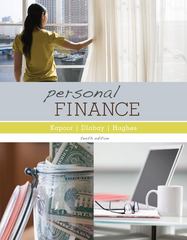Question
Question 2: We are considering buying a parcel of land that has been zoned for multifamily housing. We have determined that the best use of
Question 2:
We are considering buying a parcel of land that has been zoned for multifamily housing. We have determined that the best use of this land is to build condominiums.1
Our first decision involves the scale of our investment. The size of the lot dictates that we can build three units per floor and our issue is whether to build a two-storey (2S) or three-storey (3S) building.
A two-storey building would have six units and would cost $160,000 per unit to build. A three-storey building would have nine units and would cost $180,000 per unit to build. Cost per unit increases as the building gets taller, largely because of additional foundation and elevator costs. We will assume that condo investors earn their entire return through capital gains (rather than keeping the condos and renting them out).
Our second decision involves timing. The current value of a condominium unit is $200,000, but the housing market is volatile. We assume that the price of a condominium in one year will be either $240,000 or $180,000.
The risk-free rate of interest is 14% and there are no taxes.
If we waited one year and built and sold the condominiums at t = 1 (instead of t = 0). (d) What is the net t = 1 value of each of the two alternative developments if condominium prices rise? Assume construction costs will be the same in one year as they are today. What is the optimal choice, 2S or 3S?
(e) What is the net t = 1 value of each of the two alternative developments if condominium prices fall? Assume construction costs will be the same in one year as they are today. What is the optimal choice, 2S or 3S?
Hint: Make sure you your answers to (d) and (e) reflect the information available in one year. Also, note that your optimal choice could be different depending on whether condominium prices rise or decline. In other words, the optimal choice you select in (d) and in (e) could be different.
(f) What is the value today of the development with the flexibility to wait, based on a one-step binomial model? To answer this question, use either the replicating portfolio approach or the risk-neutral probability approach, with a single condominium unit as the underlying asset: V = $200,000, Vu = $240,000, and Vd = $180,000.
(g) What is the maximum amount we would be willing to pay for the parcel of land if we have the flexibility to wait?
(h) Should we delay the decision and the development by one year, from t = 0 to t = 1?
Step by Step Solution
There are 3 Steps involved in it
Step: 1

Get Instant Access to Expert-Tailored Solutions
See step-by-step solutions with expert insights and AI powered tools for academic success
Step: 2

Step: 3

Ace Your Homework with AI
Get the answers you need in no time with our AI-driven, step-by-step assistance
Get Started


